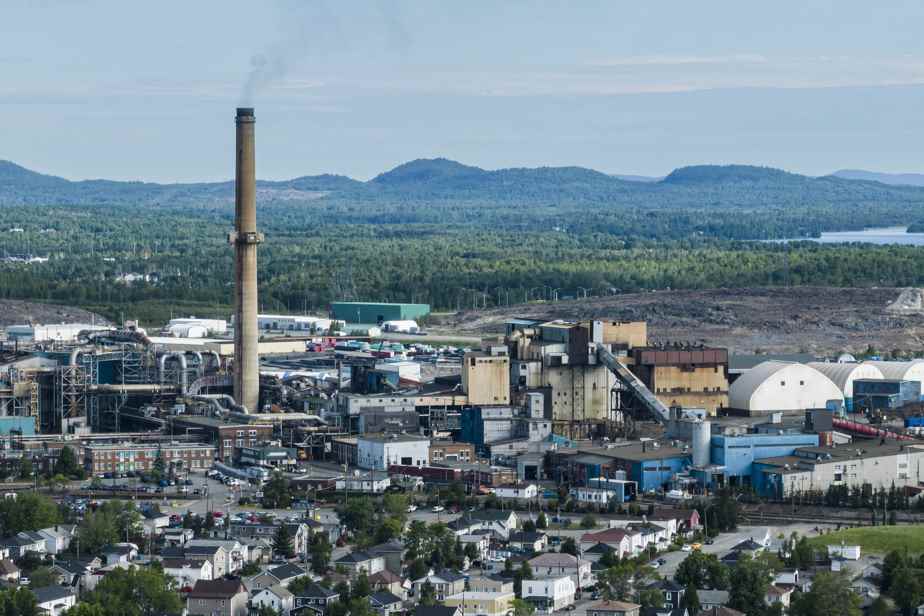(Rouyn-Noranda) The new national director of public health of Quebec will unveil on Wednesday in Rouyn-Noranda the document relating to cancer cases in the city that his predecessor had promised in September 2019, 33 months earlier.
Posted at 5:00 a.m.
The Dr Luc Boileau will take part in a press conference in the middle of the morning to “present a state of the situation concerning environmental health in Rouyn-Noranda”, indicated in a press release the Integrated Center for Health and Social Services of the ‘Abitibi-Témiscamingue (CISSSAT).
It will mainly be a question of the opinion of the INSPQ [Institut national de santé publique du Québec] on the assessment of the carcinogenic risk attributable to the concentrations of arsenic and cadmium in the air of the city of Rouyn-Noranda.
Sarah Charbonneau, CISSSAT spokesperson
This document had been invoked more than 33 months ago by the predecessor of Dr Boileau, Horacio Arruda, to justify not publishing information at this time evoking the “aggravating factor” constituted by arsenic emissions from the Horne Foundry, located in the heart of the city, in terms of lung cancer.
The Dr Arruda said then, in September 2019, that a specific report on the matter, containing “further” information, would follow.
Emissions too high, according to François Legault
The office of Prime Minister François Legault estimated that “the Horne Foundry must reduce its arsenic emissions, it is obvious”.
The Quebec standard limits arsenic concentrations to 3 nanograms per cubic meter of air (ng/m3), but Quebec authorizes the Horne Foundry to generate concentrations of 100 ng/m3.
“We do not exclude any scenario to ensure the well-being of the population,” said in a statement sent to The Press Ewan Sauves, press secretary to the prime minister.
Emissions from the foundry have “decreased greatly” since the election of the CAQ government, he said.
But let’s be clear: it’s still far too high.
Ewan Sauves, press secretary to Prime Minister Legault
The process of renewing the “sanitation certificate” of the foundry, under which it is authorized to emit contaminants, is underway, recalls the Prime Minister’s Office.
The future certificate “will include a further reduction in emissions”, assures Mr. Sauves.
Professional orders jump into the fray
The prospect of a reduction in emissions at the end of the current certificate of the Horne Smelter, which expires next December, however, seems too remote in the eyes of some.
“We must quickly put in place measures to ensure better air quality” in Rouyn-Noranda, said Monday the College of Physicians of Quebec, in a tweet on the social network Twitter.

PHOTO EDOUARD PLANTE-FRÉCHETTE, THE PRESS
More than 43,000 people live in Rouyn-Noranda.
The professional order of Quebec doctors reacted to the open letter published by about fifty doctors from Rouyn-Noranda and elsewhere in Abitibi-Témiscamingue asking Prime Minister Legault to force the foundry to reduce “without delay” its polluting emissions.
“The science is clear. The health of the citizens of Rouyn-Noranda is essential, ”said the College of Physicians of Quebec.
The Ordre des chimistes du Québec (OCQ) also jumped into the fray on Monday, asking the government to act “diligently” in this file.
The organization “questions” the follow-up given by the government and the multinational Glencore, owner of the foundry, to the biomonitoring studies of 2018 and 2019, which revealed high levels of arsenic in the nails of children and adults. of the Notre-Dame district, close to the company.
“It seems unlikely to us that the people responsible on both sides have still not done anything,” said OCQ President Michel Alsayegh in a press release, adding that “arsenic in the air can be effectively detected and only chemists can intervene as a bulwark”.
Learn more
-
- 4
- The concentrations of arsenic in the fingernails of residents of the Notre-Dame district are on average four times higher than those observed in the control population of Amos, which is not exposed to it.
SOURCE: Abitibi-Témiscamingue Integrated Health and Social Services Center (CISSSAT)

